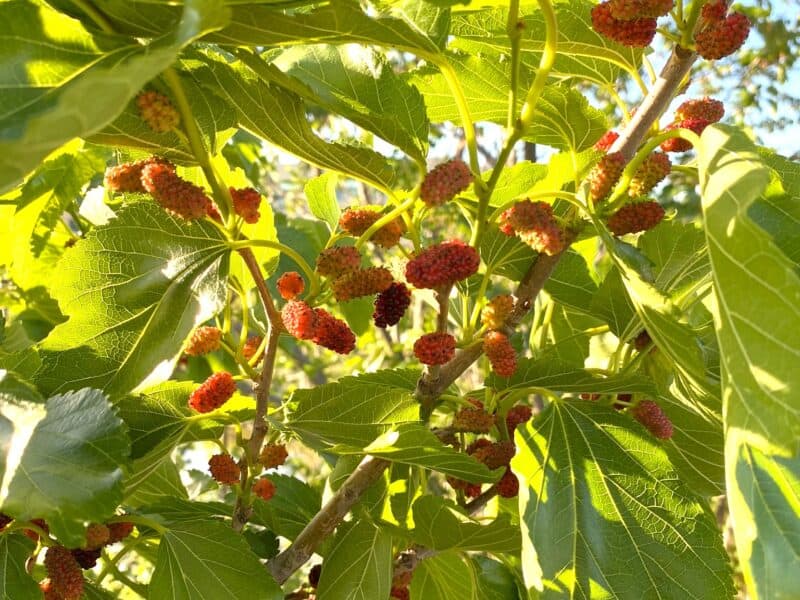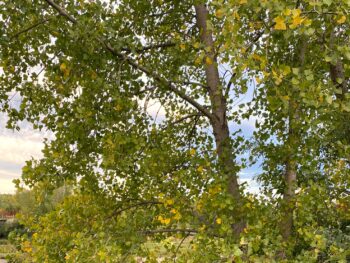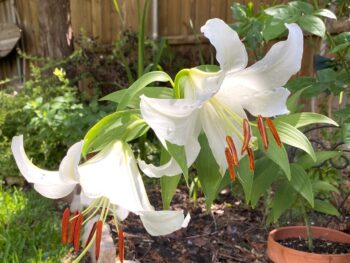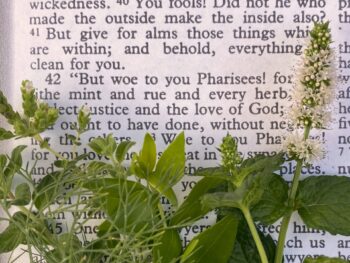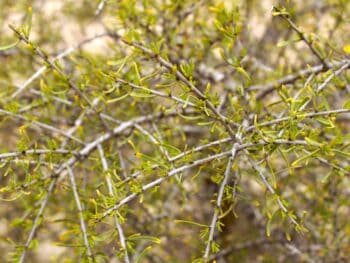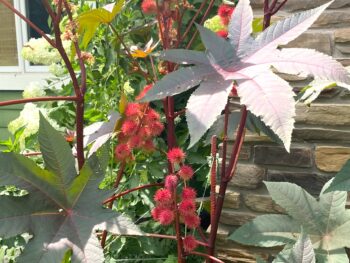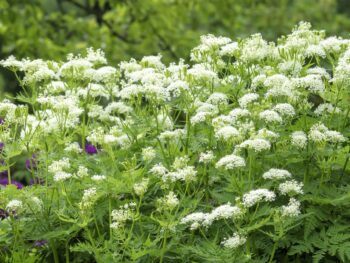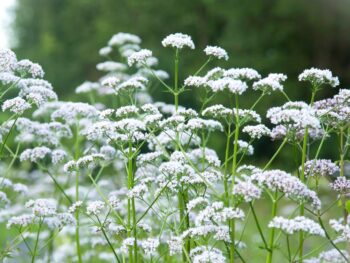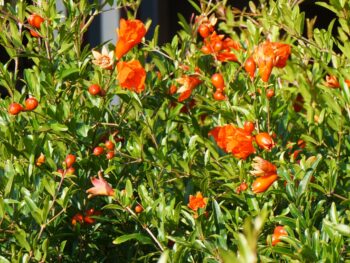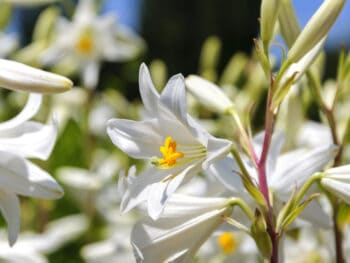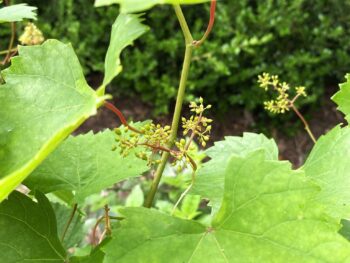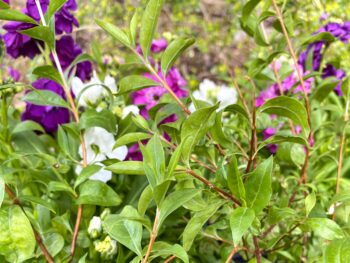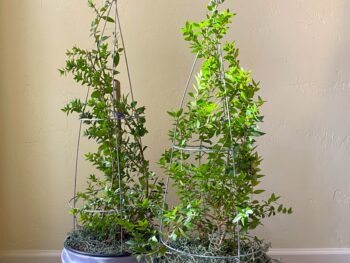A red mulberry tree, Morus rubra, has captured my attention this spring, have you seen any fruiting near you? Native to Texas and much of eastern and midwestern America, we have a wild one growing along the waterway in our neighborhood, and I snack on a few tart fruits most mornings as I run by. Red mulberry is very close to the mulberry tree of the Bible, Morus nigra, the black mulberry, bringing us to a timely reminder in this season:
The Lord replied, “If you had faith as tiny as a mustard seed, you could say to this mulberry tree, ‘Be uprooted and planted in the sea,’ and it would obey you. Luke 17:6 NCB
Mulberries belong to the Moraceae family—let’s dig into 3 of this plant family’s key trees, which reveal a botanical view with amazing insight for moving mulberry trees and mountains.
Moraceae Family Trees
Mulberry Trees
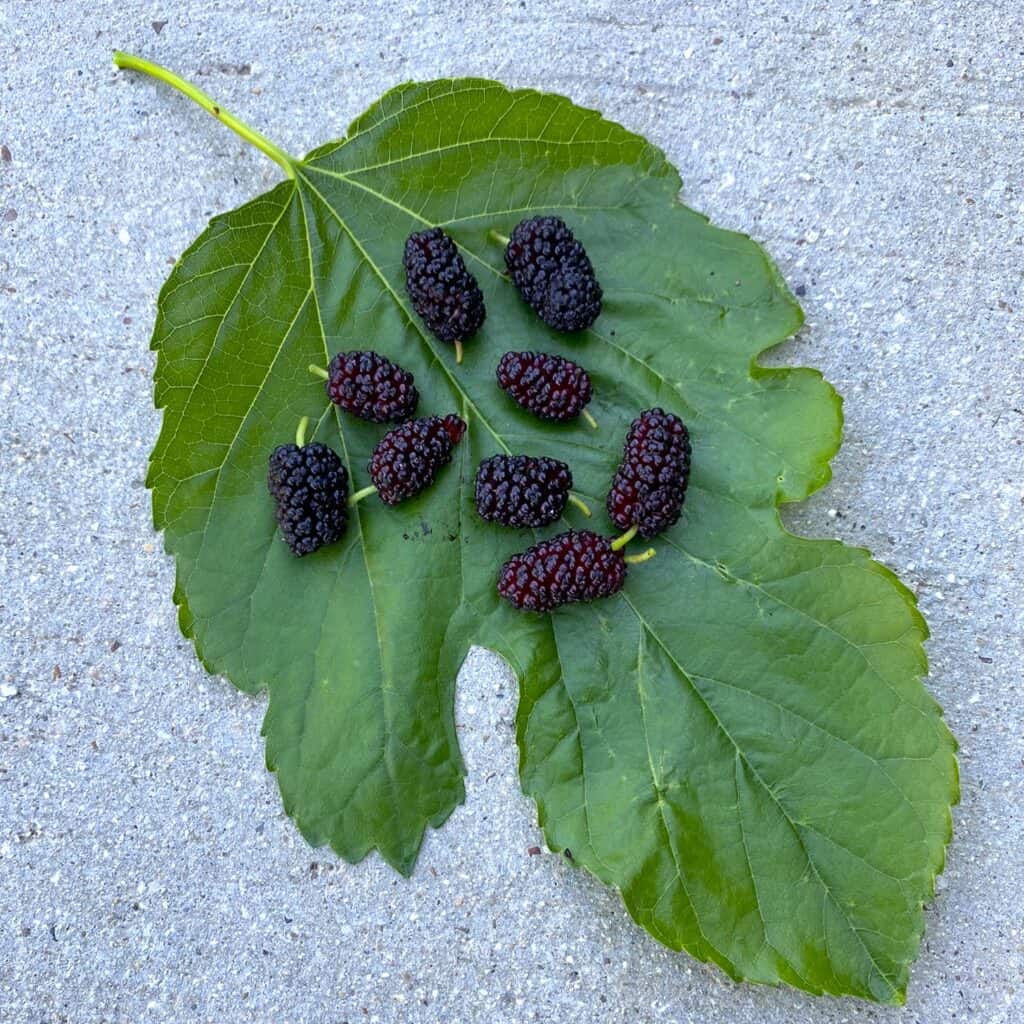
Mulberry trees offer unique fruits that are hard-to-find in produce sections. Eating them fresh from the tree is a rare delight; enjoy their sweet-tart, blackberry-ish taste through middle to late spring. The trees are deciduous, though their fall color is nondescript (and actually a bit scruffy!). Leaves are broad, oval or three-lobed, with serrated edges. Red mulberry, Morus rubra, will be most popular in American gardens and landscapes as a native (its leaf and fruits pictured here), and leaves tend to form little pointed tips as a slight distinction from Morus nigra. Red mulberries can mature to 60 or 70 feet tall, with an overall oval-formed, rounded canopy. Their fruits drop readily once ripe, making them easy to eat but messy on patios or walkways.
M. nigra, the Biblical most-likely and native to Asia, grows to about 30 feet with a more massive, spreading, mountain-like habit. As their name implies, black mulberries yield darker, purple-black fruits than the reds. All the mulberry trees are fairly easy to grow, and fruit production becomes more robust after being established for 5 to 15 years. The trees have a long lifespan in rich soil with minimal care.
The Lord replied, “If you had faith as tiny as a mustard seed, you could say to this mulberry tree, ‘Be uprooted and planted in the sea,’ and it would obey you. Luke 17:6 NCB
click here for a side trip to study mustard seeds
Fig Trees

Fig trees are a Biblical garden favorite, mentioned in many Garden in Delight blogs and part of the Seven Species—by now you are familiar with figs! Ficus carica and its many cultivars grace gardens with delicious, funky fruits in mid-summer and mid-fall. Pictured here are figs and leaves from the dwarf variety, ‘Little Miss Figgy.’ Full sized cultivars have huge, deciduous leaves, creating a sheltered canopy for this multi-trunked tree, with many hiding places for young gardeners’ adventures. The tree is both a symbol of national security (Micah 4:4, Zechariah 3:10) and a focal point of many corrective lessons (Genesis 3:7-10, Mark 13:28), as in Jesus’ rebuke:
Peter remembered and said to Jesus, “Rabbi, look! The fig tree you cursed has withered!” “Have faith in God,” Jesus answered. “Truly I tell you, if anyone says to this mountain, ‘Go, throw yourself into the sea,’ and does not doubt in their heart but believes that what they say will happen, it will be done for them. Mark 11:21-23 NIV
click here to find more blogs about figs
Sycomore Fig Trees

Sycomore figs, Ficus sycomorus, are not widely known outside their native region, the Levant and northern Africa. The trees are broadleaved, reaching heights of 50 feet, yet their low, sturdy branching would make for easy climbing. Fruits grow directly on the trunk and massive branches, which looks a little odd and might have made Zaccheus’ feet all gooey! They were fodder for animals or a poor person’s more modest diet, creating a humble backdrop for proud, wealthy Zacchaeus.
Jesus entered Jericho and was passing through. A man was there by the name of Zacchaeus; he was a chief tax collector and was wealthy. He wanted to see who Jesus was, but because he was short he could not see over the crowd. So he ran ahead and climbed a [sycomore-fig] tree to see him, since Jesus was coming that way. When Jesus reached the spot, he looked up and said to him, “Zacchaeus, come down immediately. I must stay at your house today.” So he came down at once and welcomed him gladly. Luke 19:2-6 NIV
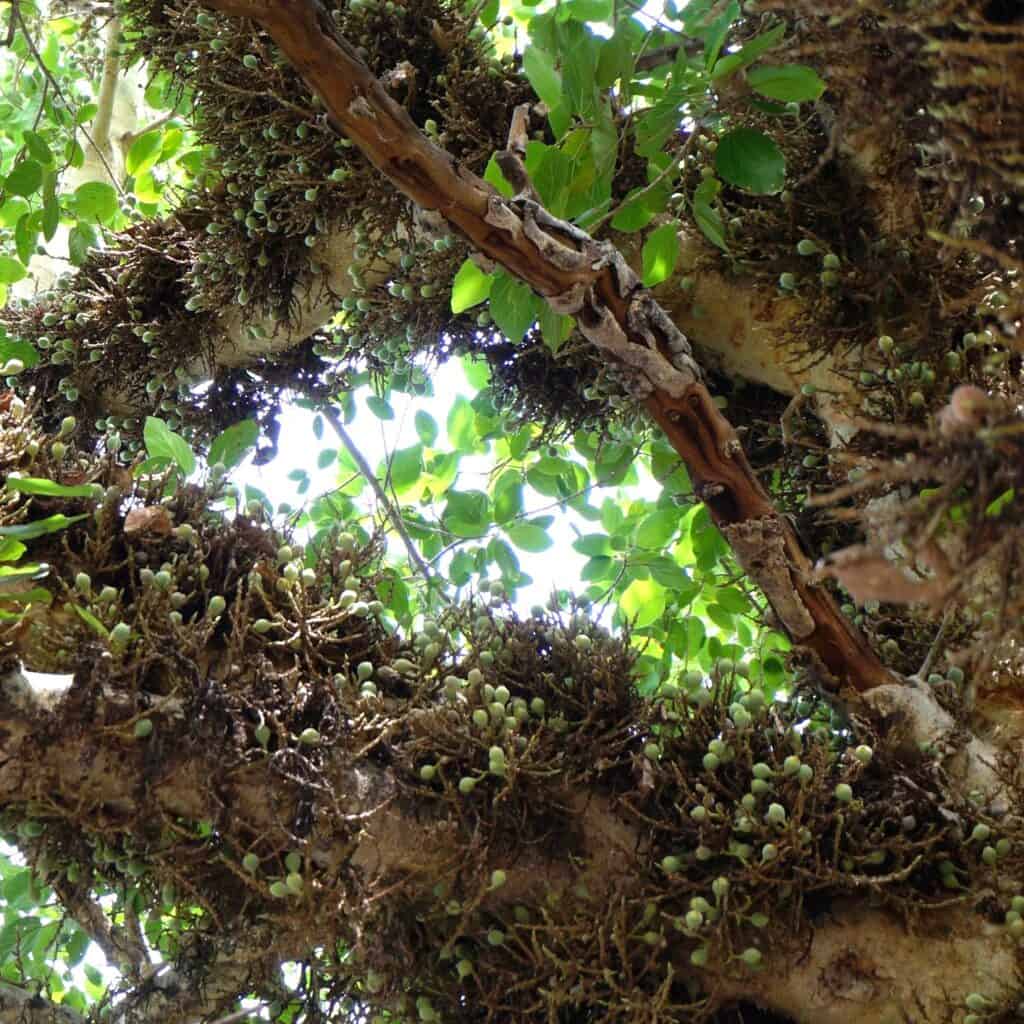
Gardeners, be aware of the confusion of sycamore tree and sycomore-fig. Spellcheck will automatically change “sycomore” to “sycamore,” which is why this error goes unnoticed in so many Biblical manuscripts, yikes! Yet we can tell from the Latin name, and certainly from the two completely different physiologies, the important distinction between these two kinds trees. Sycomore fig makes much more botanical sense in the story. The rare, subtropical tree is not likely for our gardens, yet its botany leads us to a special view of God’s rich outreach.
Moving Mulberries and Mountains
Making this a mulberry family moment, let’s consider these three Scriptures together, amassing their impact to see the Lord’s imparting, and maybe we will hear His sound of marching!
And it shall be, when you hear the sound of marching in the tops of the mulberry trees, then you shall advance quickly. For then the Lord will go out before you to strike the camp of the Philistines. 2 Samuel 5:24 NKJV
As the trees are connected botanically—mulberry, fig, and sycomore fig—so are the Kingdom concepts that Jesus conveys. First, Jesus’ mulberry metaphor enlightens us that a massive, tangible, earthly reality like a rooted mulberry tree can be moved, and our faith can command it. That is, words spoken to the spiritual realm stir the physical realm. The size of our faith makes no difference; even small seed-faith moves big-tree troubles, obstacles, and things in the way of God’s will. Imagine the lush, full-spreading, productive canopy of the tree and its thick, stalwart trunk: Still no match for the faith command.
Next, hear Jesus’ withered fig Words, “Have faith in God!” Let this Word marinate for a moment; may it sound deeply through you. He continues with nearly the same mulberry Wording to decree to a mountain-like hindrance, “throw yourself into the sea,” assuring it will be done.
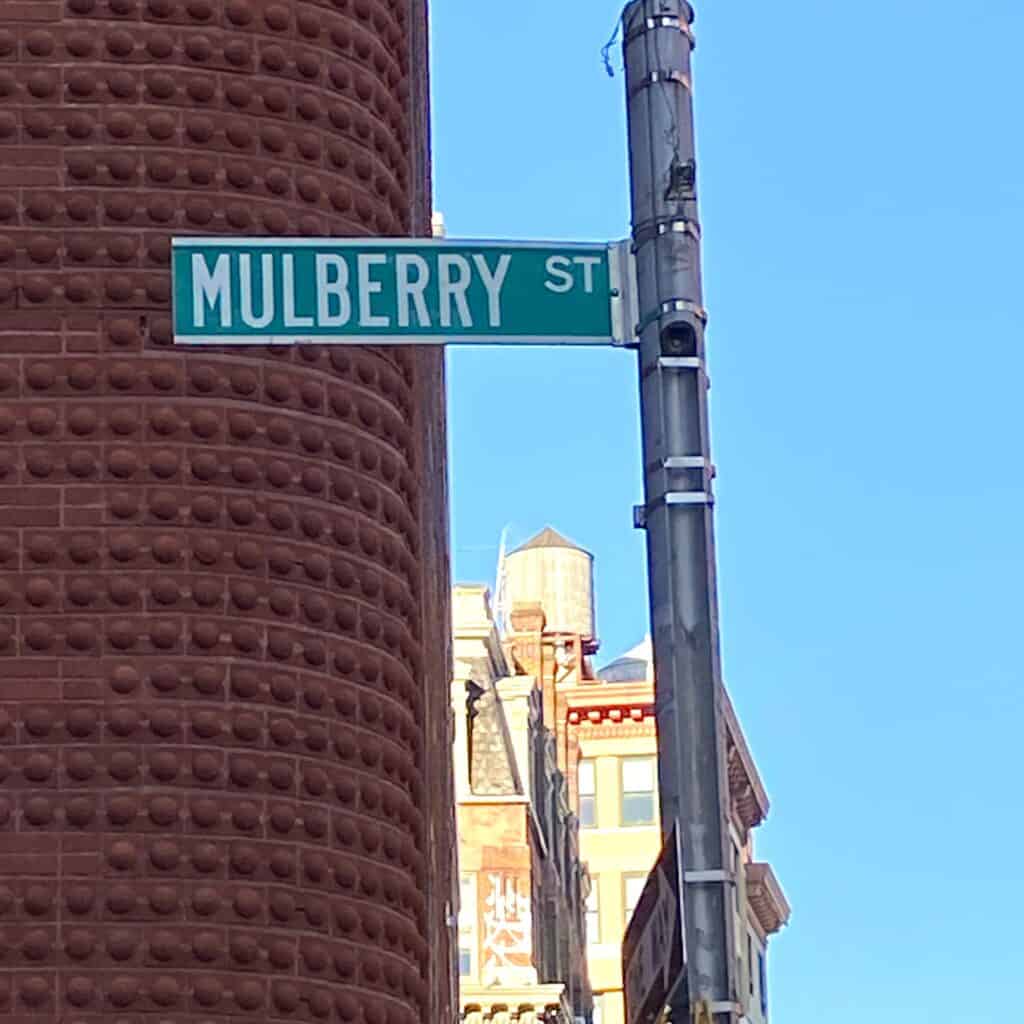
Last, witness Zacchaeus, who mounted up the sycomore fig branches, full of pride, selfish ambition, deceitful ways, yet yearning to see Jesus. These metaphorical mulberry trees in his demeanor were totally moved when Jesus said, “Come down immediately. I must stay at your house today.” Wow! The Lord revealed faith-moving power with the mulberry and fig, now the sycomore-fig connects us to a real-life example of faith commands moving in a man’s life.
The Words moving mulberries and mountains with the two Moraceae species bear fruit in the third story, and from the sycomore fig tree, Jesus goes to Zacchaeus’ house, inspiring the tax collector’s total turnaround. Newly aligned with the Lord, the tax man repaid all the evil he did to his fellow citizens with good, restoring more than what he had stolen.
Mulberry Commission
Let this be our season, as mulberry fruits ripen and speckle our nation’s landscape, for saying to all evil entrenched in our lives: Be uprooted!
As we move forward in this commission, let us dig still deeper to notice that Jesus planted each these Moraceae tree stories in the greater context of servanthood: to show that commanding things to move is a duty station, a servant’s work. It is not bestowed for a privileged life, as a right, or for positioning or self-aggrandizing. It is to be a practice for those called to serve.
Following mention of the mulberry tree, Jesus teaches the right posture of a servant’s heart:
“…It is the same with you; when you have done all you have been told to do, say, ‘We are ordinary servants; we have only done our duty.’” Luke 17:10 GNT
Surrounding mention of the withered fig, we see Jesus’ disgust at those keeping the temple for not serving God’s purpose:
Then He taught, saying to them, “Is it not written, ‘My house shall be called a house of prayer for all nations’? But you have made it a ‘den of thieves.’ Mark 11:17 NKJV
Following the sycomore fig story, Jesus imparts his high value of stewardship:
‘Well done, my good servant!’ his master replied. ‘Because you have been trustworthy in a very small matter, take charge of ten cities.’ Luke 19:17 NIV
All of these resound our original commission, dear gardeners! No surprise with a revelation coming from trees to remember the Garden of Eden charge to serve and keep.
And Jehovah God taketh the man, and causeth him to rest in the garden of Eden, to serve it, and to keep it. Genesis 2:15 YLT
Our hearts are set to care and cultivate and work and keep and serve the garden; likewise may we encourage each other and our families by serving under the mulberry commission.
Closing Prayer:

O Lord, let us hear you marching in the treetops of our land, especially the mulberry trees (2 Samuel 5:24 NKJV). You are moving to save our nation, the nation of Israel, and all the peoples of the earth (Genesis 12:3), and You are advancing quickly. Let every family enjoy the fruitfulness and security that You have promised under our own fig tree (Micah 4:4, Zechariah 3:10) and let the mountains of deceit be thrown out. Overcome our shortcomings, O God; provide what we need to let us see You, Lord Jesus, and make the total, sincere turnaround of the sycomore fig tree story. Grow Your strength in us (Psalm 138:3) and let us be ready for moving mulberry trees and mountains with our faith. It is our season to overcome evil with good…the good, juicy, sweet productivity of Kingdom life. We trust that You are going out before us, O Lord (2 Samuel 5:24 NKJV), and we watch for You as You seek out and give life to those who are lost (Luke 19:10). Amen.
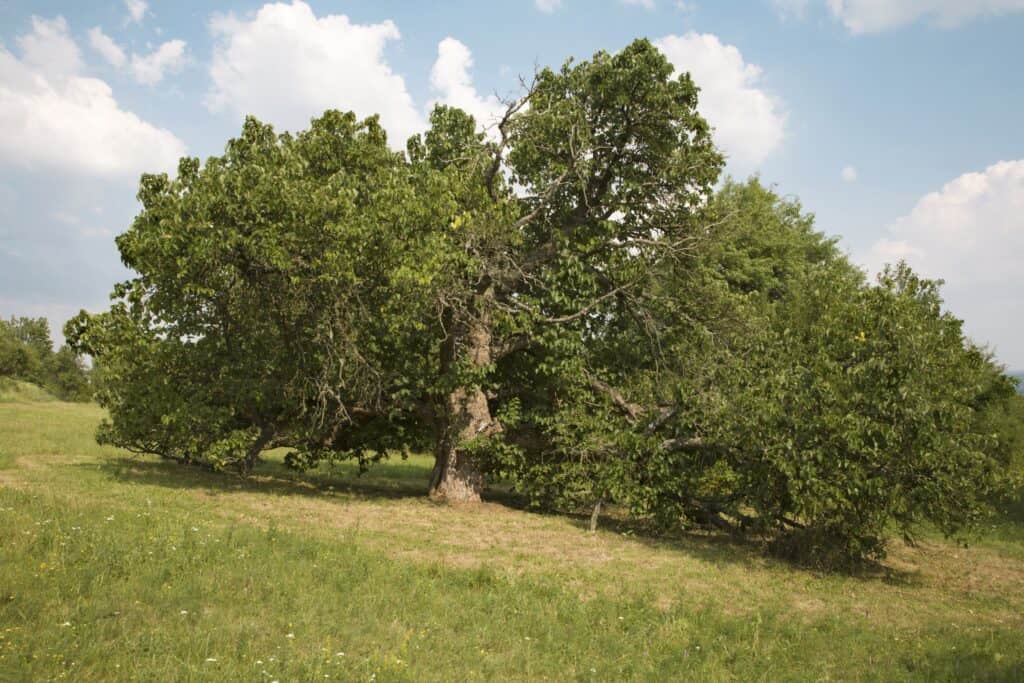
Thank you for your love, thank you for your faithfulness; Most holy is your name, most holy is your Word. The moment I called out, you stepped in; you made my life large with strength. Psalm 138:2-3 The Message
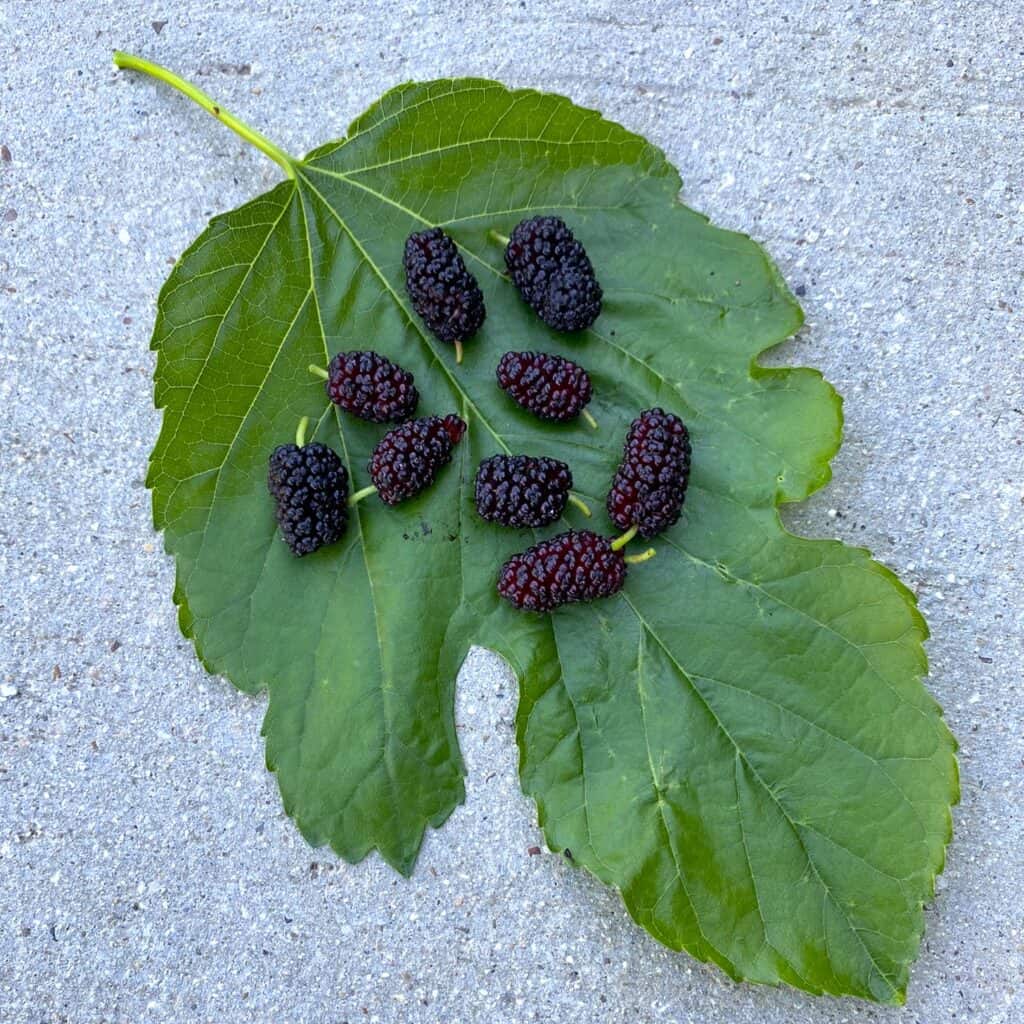
Here are a few links for more on cultivating red mulberry trees: GrowingMulberries.org, Native Plant Society of Texas, Texas A&M Extention, Missouri Botanical Garden Plant Finder
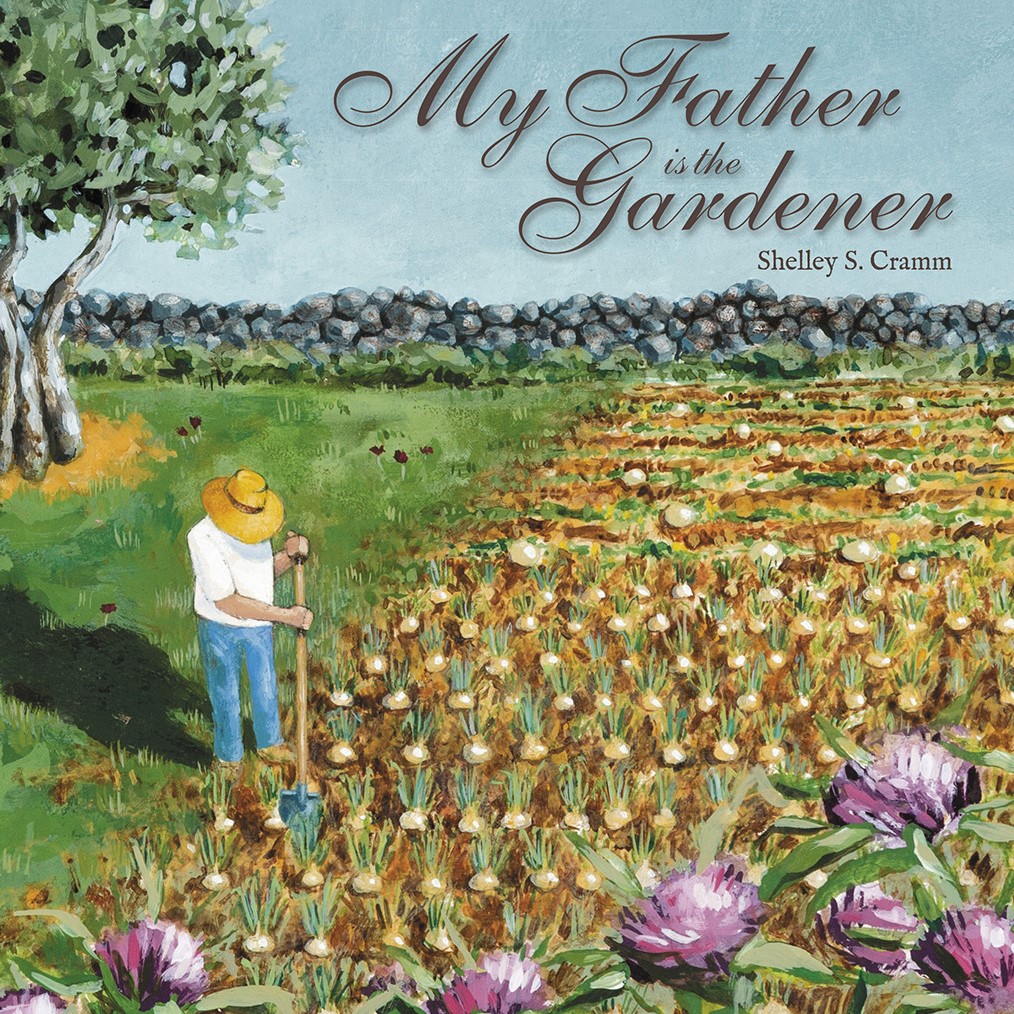
Do you love connecting God’s Word to your gardening work and the trees and plants around you? You will love my new book, My Father is the Gardener, Devotions in Botany and Gardening of the Bible, order at this link.
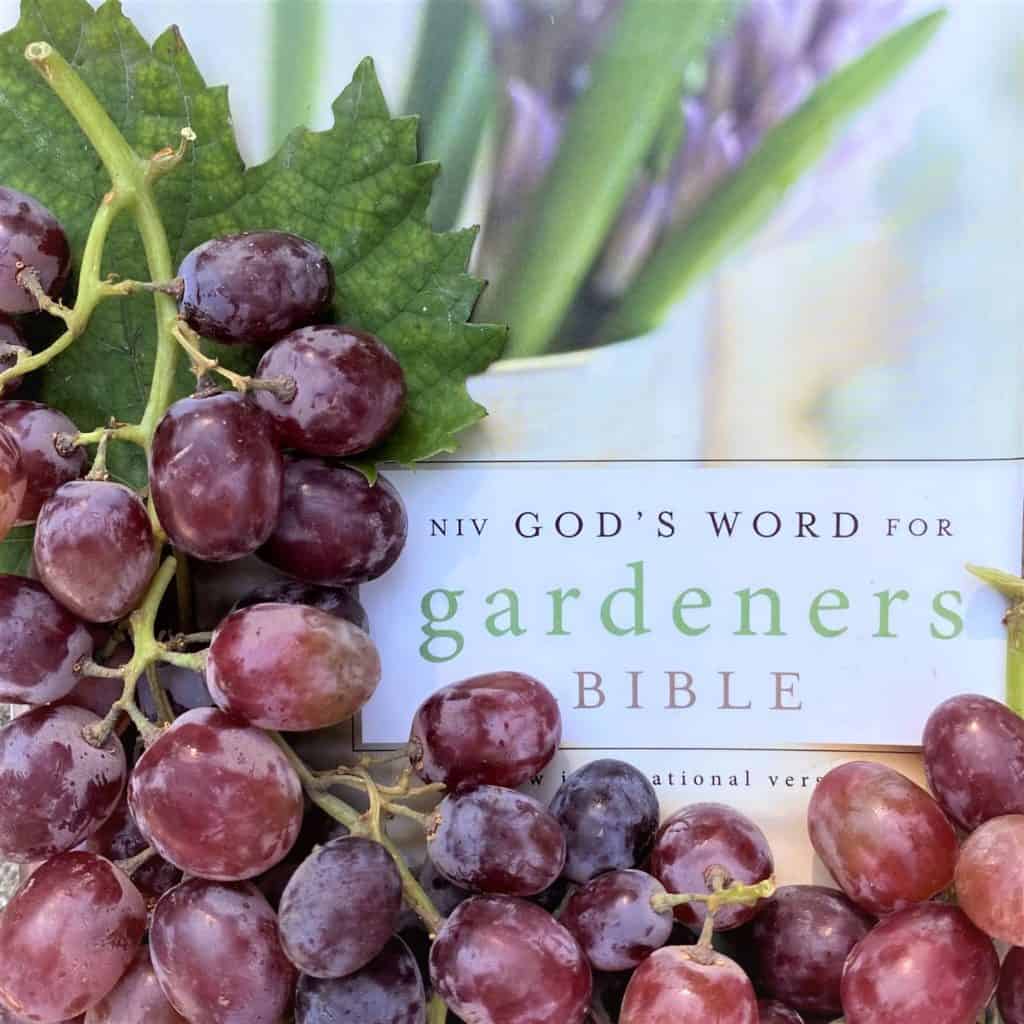
Find figs in God’s Word for Gardeners Bible in the landscapes of the Garden of Eden, pages a-12 & a-13, and the Promised Land, pages a-15 & a-16, part of the Garden Tour section of devotions. Also figs are found in Israel’s Horticultural Allegories, pages a-45 & a-46 in Garden Stories

Garden in Delight Plant Guide offers planting and garden-to-table information on fig trees: www.gardenindelight.com/plant-guide/fig/ & mulberry and sycomore fig will be coming soon!
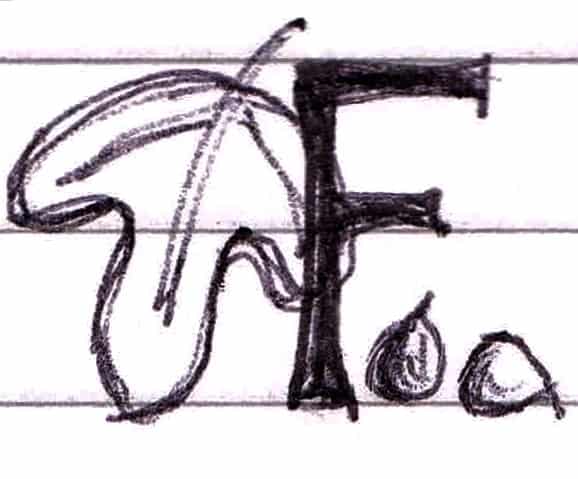
Dig deeper into the layers of meaning in the mention of fig trees in God’s Word in the A-to-Z Primer of Plants in God’s Word, scroll down to F is for Fig Tree
Photo Credits: cover photo – ©2024 Shelley S. Cramm red mulberries in morning light on a wild tree growing in Irving, TX; end photo – Photo 26423553 | Morus Nigra © Jozef Sedmak | Dreamstime.com, Mulberry tree – very old Morus nigra – Slovakia; all other photos ©2024 Shelley S. Cramm
GNT denotes Scripture quotations from the Good News Translation® (Today’s English Version, Second Edition) Copyright © 1992 American Bible Society. All rights reserved.
The Message denotes Scripture quotations taken from THE MESSAGE, copyright © 1993, 2002, 2018 by Eugene H. Peterson. Used by permission of NavPress. All rights reserved. Represented by Tyndale House Publishers, a Division of Tyndale House Ministries.
NCB denotes Scripture taken from the SAINT JOSEPH NEW CATHOLIC BIBLE® Copyright © 2019 by Catholic Book Publishing Corp. Used with permission. All rights reserved.
NIV denotes Scripture quotations taken from the Holy Bible, New International Version®, NIV®. Copyright © 1973, 1978, 1984, 2011 by Biblica, Inc.® Used by permission of Zondervan. All rights reserved worldwide. www.zondervan.com The “NIV” and “New International Version” are trademarks registered in the United States Patent and Trademark Office by Biblica, Inc.®
NKJV denotes Scripture taken from the New King James Version®. Copyright © 1982 by Thomas Nelson. Used by permission. All rights reserved.
YLT designates Scripture quotations taken from the 1898 Young’s Literal Translation by Robert Young, now public domain in the United States. The book is still in print and may be ordered from Baker Book House.

